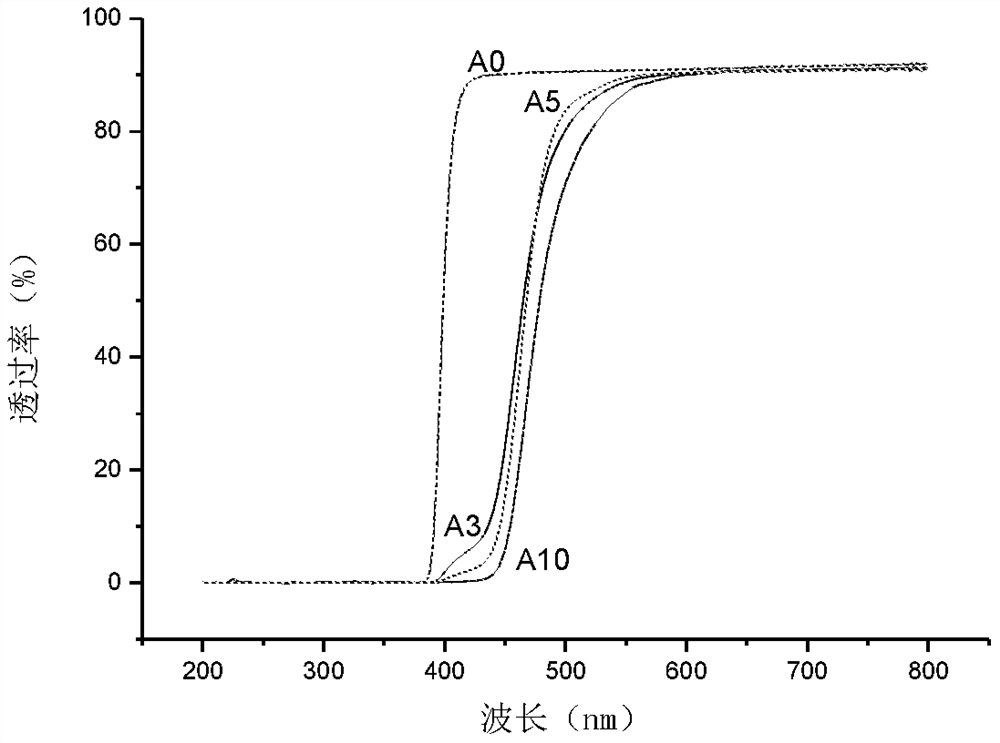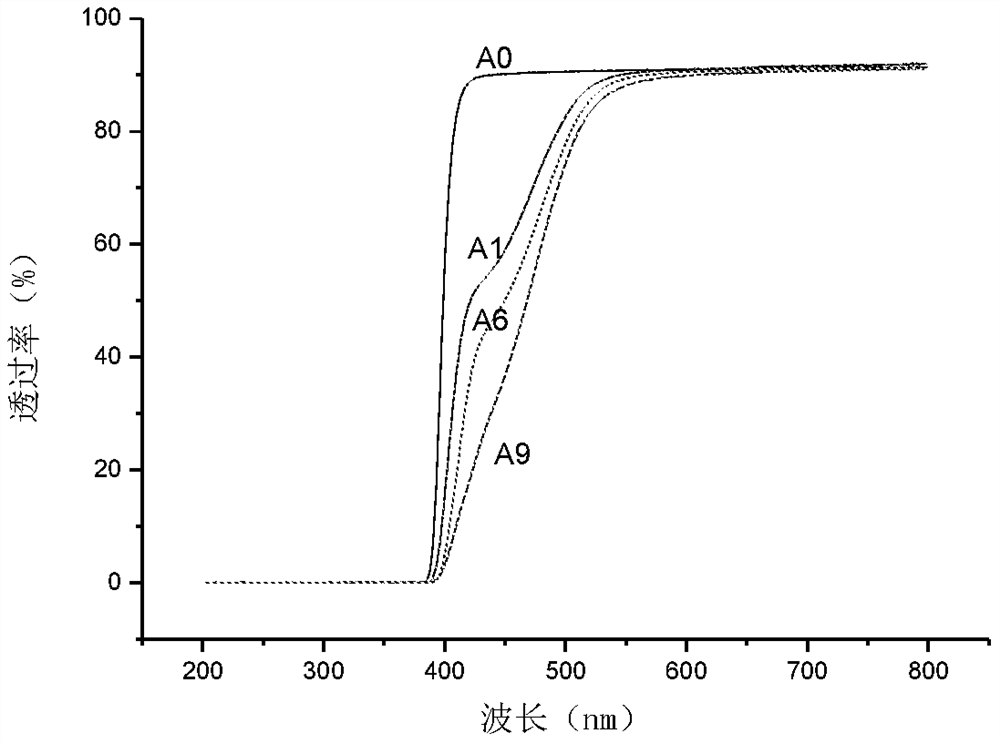Azo compounds, polymers and their preparation methods and uses
A technology of azo compounds and polymers, applied in organic chemistry, eye implants, organic dyes, etc.
- Summary
- Abstract
- Description
- Claims
- Application Information
AI Technical Summary
Problems solved by technology
Method used
Image
Examples
Embodiment 1
[0120] 1-(4-((4-Hydroxyphenyl)diazenyl)phenoxy)-3-methoxypropan-2-ylmethacrylate
[0121]
[0122] Step 1: Synthesis of compound 1-(4-nitrophenoxy)-3-methoxypropan-2ol
[0123] Add 4-nitrophenol (41.7g, 0.3mol), potassium carbonate (56.5g, 0.1mol) and absolute ethanol (200mL) to the three-necked flask successively, and after stirring the mixture under reflux for 1h, slowly add 1- Chloro-3-methoxy-2-propanol (25.0 g, 0.2 mol), and stirring was continued for 24 h. The reaction solution was cooled to room temperature, filtered, and the filtrate was rotary evaporated to remove ethanol. The crude product was diluted with dichloromethane (250 mL), and washed with aqueous sodium hydroxide solution (5 wt%, 150 mL×2). The organic phase was dried overnight with anhydrous magnesium sulfate, filtered and evaporated to remove the solvent to obtain a light yellow viscous liquid (27 g, 59.1%). The mass spectrum and nuclear magnetic resonance H spectrum data of gained product are as foll...
Embodiment 2
[0146] Compound 1-(4-((4-Hydroxyphenyl)diazenyl)phenoxy)-3-methoxyprop-2-ylacrylate
[0147]
[0148] Step 1: Synthesis of compound 1-(4-tert-butoxycarbonylaminophenoxy)-3-methoxyprop-2-ylacrylate
[0149] 1-(4-tert-butoxycarbonylaminophenoxy)-3-methoxypropan-2-ol (8.00g, 26.94mmol), triethylamine (5.45g, 53.96mmol), 4-Dimethylaminopyridine (0.65 g, 2.50 mmol) and tetrahydrofuran (150 mL), after fully dissolving, slowly add acryloyl chloride (4.80 g, 46.12 mmol) dropwise to it, stir at 0 °C for 1 h, then return to room temperature and continue Stir for 24h. 50% aqueous sodium bicarbonate solution (10 mL) was added to the mixture to terminate the reaction, and after stirring for 10 minutes, the reaction solution was filtered, the tetrahydrofuran was removed by rotary evaporation, and the product was subjected to column chromatography (n-hexane / EtOAc (v / v) = 5 / 1 ) to obtain a pale red transparent viscous liquid (8.05 g, 81.9%). The mass spectrum and nuclear magnetic resona...
Embodiment 3
[0161] 1-(4-((2,4-Dihydroxyphenyl)diazenyl)phenoxy)-3-methoxyprop-2-ylacrylate
[0162]
[0163]The rest of the steps are the same as in Example 1, except that in step (6), 1-(4-aminophenoxy)-3-methoxypropan-2-yl methacrylate is successively added to the three-necked flask (3.00g, 11.30mmol), potassium bromide (1.35g, 11.30mmol) concentrated hydrochloric acid (5.70g, 56.50mmol) and acetone / water (v / v, 1 / 1) mixed solution (20mL), the mixed solution in Stir in a low-temperature bath at -5°C. When the internal temperature reaches below 0°C, dissolve sodium nitrite (0.93g, 13.60mmol) in water (20mL), slowly dropwise add to the above reaction solution, and continue stirring for 0.5h. Resorcinol (1.23g, 11.30mmol), sodium hydroxide (1.11g, 28.30mmol), sodium carbonate (1.50g, 14.10mmol) were dissolved in water (20mL), and added dropwise to the above diazonium salt solution, During the dropwise addition, keep the temperature of the solution not higher than 5°C. Stirring was cont...
PUM
 Login to View More
Login to View More Abstract
Description
Claims
Application Information
 Login to View More
Login to View More - R&D Engineer
- R&D Manager
- IP Professional
- Industry Leading Data Capabilities
- Powerful AI technology
- Patent DNA Extraction
Browse by: Latest US Patents, China's latest patents, Technical Efficacy Thesaurus, Application Domain, Technology Topic, Popular Technical Reports.
© 2024 PatSnap. All rights reserved.Legal|Privacy policy|Modern Slavery Act Transparency Statement|Sitemap|About US| Contact US: help@patsnap.com










